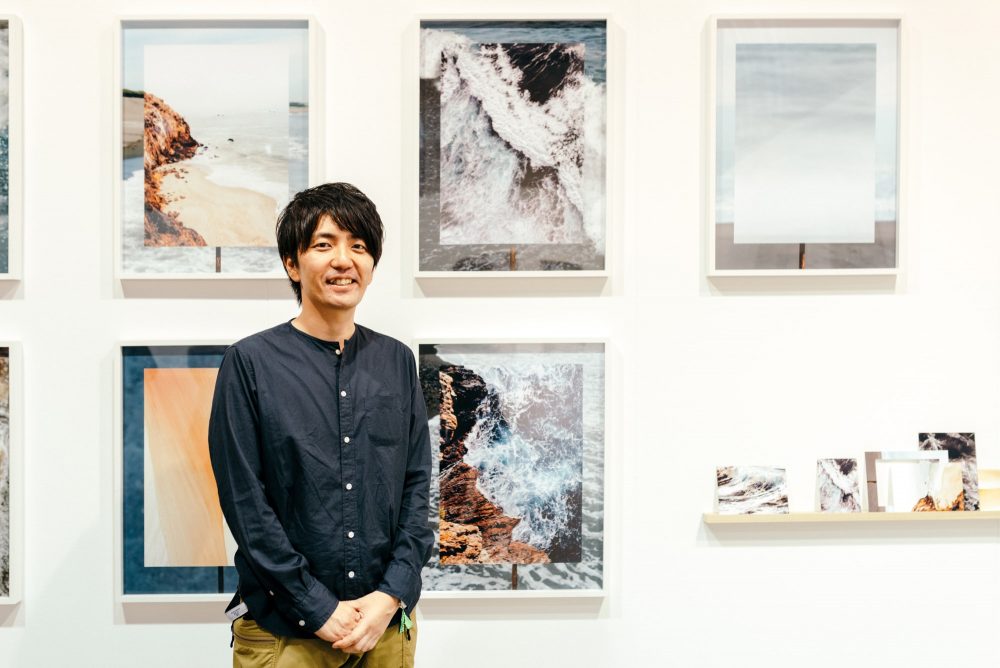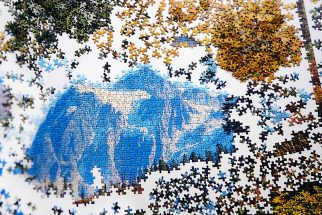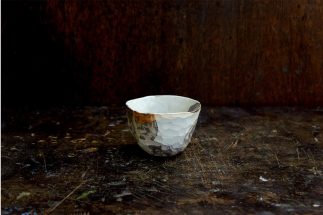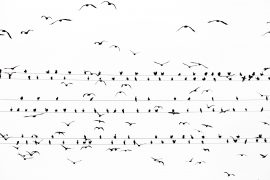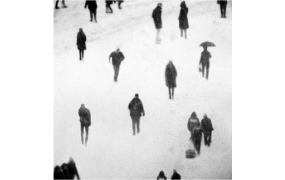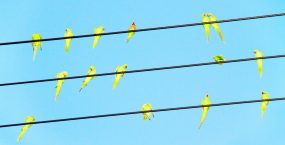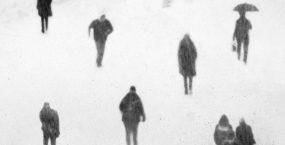Takeshi Mita presents us with his experimental works centered around the theme of “experience.” These new works, shot for LUMIX MEETS BEYOND 2020 BY JAPANESE PHOTOGRAPHERS #6, skillfully demonstrate the experience of viewing images from a single perspective — something that can often occur in the current age of media. How do we respond to our current situation: one where everything is experienced vicariously through media? In this interview, I ask Mita about how he uses his creative process to connect to this world, as well as his prospects for the future.
Interview=Eisaku Sakai
Photo=Dustin Tierry
―What got you started in photography?
I originally studied printmaking for four years in college; it was much later when I started using the camera to express ideas. I would apply chemicals to metal plates, then exposing and corroding them: bringing the image to the surface. I wasn’t very cognizant of the fact that I was working with photography at the time.
―What made you start taking pictures after that?
I felt that there were advantages in using the camera to depict the human experience. You can play into people’s expectation of what photography is, then flip that expectation on its head. There were lots of interesting aspects of printmaking, but it’s not nearly as well-known when compared to photography. Even if were to I tell you that I can make metal melt away to reveal an image, the general response will just be, “…huh?” (laughs).
―I guess most people would need to see it for themselves to understand.
Everyone has taken a photograph before and we live in a world inundated with them. So it feels more relatable to them that way.
―There’s a baseline understanding viewers have from their own experience: from taking pictures themselves.
Exactly. The fact that they’ve used a camera is huge. Digital cameras have reduced the costs of photography, and I think that plays an integral part in our own experiences. For me as well — the first camera I ever bought for myself was digital.
―That fits right into your focus for this series — “experience.” Could you tell me more about that? Is it also related to the post-digital age?
Maybe it would be best to explain the two types of experience before delving further. Of course, these definitions are not air-tight as they’re mere words. But in general, anything felt in a physical place with your five senses is a “physical experience.”
We obtain the other kind of experience without physically being there — a “vicarious experience.” Worth noting here is that vicarious experiences are someone else’s physical experience but phased through a filter — one that polishes it and gives it more structure.
I think that physical and vicarious experiences have become increasingly inseparable in this modern-day “information society.” And that’s a phenomenon that’s been apparent since the dawn of letterpress media, but it’s become so much more conspicuous through social media and image-sharing sites. What do we experience physically; what do we experience vicariously? Are we having a firsthand experience, or is our experience one garnered by the agency of another? The standards dividing them are becoming increasingly vague. How human beings act in midst of that ambiguity is one of the themes I cover in this collection.
―In looking at the internet, you notice that it’s overflowing with secondhand experiences. Like how you look up tourism information before you go on a trip.
It really is. And then you actually go there and take pictures like you’re checking off tick-boxes you fill in as answers to a test. Then make your way back home again.
I’ve been thinking about experiences like that lately, and I started to wonder if directing my thoughts to the concept of “imagination” would lead me in the right direction.
―What do you mean?
I think we increasingly find ourselves in situations where we have to respond to something we haven’t directly experienced. Take the World Wars, for example – those who have actually lived through it continue to pass away. Soon, all we’ll be left with is responsibility and evidence. Or maybe it’ll become the basis that justifies something new. A picture or something of the sort is a wonderful example… how do we act when presented with something like that? Something resembling a lack of responsibility comes to being within our actions – and unfolds in a way we’ve never seen before.
Put more simply, it’s like we believe in a single photograph in excess; to the extent that we try to force reality to confine to the image. I think this is an issue that comes hand-in-hand with criticism of evidentialism, but for the past several years, people assign more importance to photographs left behind than to the individual, concrete world that they depict. In this society, we use our imagination to fill in the discrepancies between the real world and evidence; and I wonder if we connect our physical and vicarious experiences in the same way.
―I feel like considering the discrepancies between evidence and the real world can help build upon the imaginations of those experiencing that event second-hand. Is your goal in “Tracing” to reveal these discrepancies?
Since a motif of this exhibition is to consider how to respond to a world of uncertainty, I wanted to present a possible response — or at least show the possibilities and limitations of such a response. For these works, I would go to a place depicted within a certain photograph to prove it was actually photographed at the location in question. But of course, just as the shape of each and every wave in the ocean is unique, I cannot be certain if the photographs depict exactly the same place. Whether or not you think they’re from the same location is entirely a matter of belief. What’s more: the subject of cross-reference is hidden entirely behind another photograph. In viewing the present and the past in a single perspective, various possibilities arise: within, one sees a figurative representation of one of those possibilities.
―Having blind faith in a single photograph, as you were saying.
Exactly. And the details within each piece are orchestrated to break down the consistency of the whole. For example, it may seem like the photograph was shot with scenery in the background and the image in its center, but it may be that the photograph is the surrounding background, with a window cut out in the middle. This is to show just how much a person’s expectation ¬- that they can understand a photograph correctly – can betray them.
―People will start questioning everything that they see. I think that we are naturally limited to the act of “seeing” as a result of using a medium of visual expression such as photography. What are your thoughts on indirect experiences that come to being merely by virtue of seeing?
Society today places precedence on visual experiences, and this is reflected in the fact that most works of art have been made to appeal to our sight. But of course, memories are connected to the senses of touch and smell, and our experiences come to being through all five senses. In my previous work called “Climb the Contours,” I bundled and pieced together an essential adventurer’s journey: making use of pieces that appealed not only to one’s sense of sight, but also hearing, touch, taste, and smell; it is a collection of simple sensations relating to our experiences.
―As you delve deeper into the nature of experiences, it would make sense that other senses outside of the realm of sight would come into the picture as well.
Right. And yet, I still feel that sight has precedence in my mind. I think I’ve become too deafened to the other senses and I want to do something about it. I’ll be going on abroad in March of next year – and I want to delve into non-visual experiences when I’m there: ones that come to life by putting oneself in an unfamiliar environment.
―To literally put yourself there. So, if we were to categorize between the two kinds of experience – vicarious and physical – that we discussed earlier, this would be classified as a “physical experience.”
Yes, a physical experience. Up till now, my physical and vicarious experiences have been indiscernible from one another, so I can’t really say whether one is better than the other. I’ve been wondering how to go on and lead a positive, upbeat life in a world a world where they’ve become so interwoven. But even as I say that, for the past several years, all of my experiences have been indirect.
So this time, I want to put myself right in the middle of physical experience: to look out at vicariousness from that place.
I’ll be going to Hawaii, and it feels to me like the right place to do this. Hawaii has this image about it makes it look like the set of a stage in my mind; I hear about it all the time, but I don’t know what it’s like to actually be there.
―It’s interesting that you see Hawaii in that way.
It’s become so utterly touristy that the information that’s provided about only proffers a superficial glimpse. It is so much a place that’s experienced secondhand. But beyond that stage scenery, people lead out their ways of life. Now I want to go there; I want to see how Japan will look to me from that place.
―What’ll you do there exactly?
I have a few ideas. One idea for context: many Japanese immigrants in Hawaii no longer have any memories of Japan. When families have lived there for eight generations, they forget how to speak Japanese. But I’ve heard some stories, and I understand that events from the past have been passed down their family line: and those physical experiences have been polished into vicarious experiences. During the War, people were pressured into doing grueling things by virtue of their Japanese descent. I want to understand such things, but rather than expending all my efforts on consuming one individual’s experience, I’d like to perform research: to shed light on one person as they are. On top of that, as it is in Japan, first-hand witnesses of the war are becoming increasingly sparse. I hope to find an account that offers variation from the perspectives presented in historical documents.
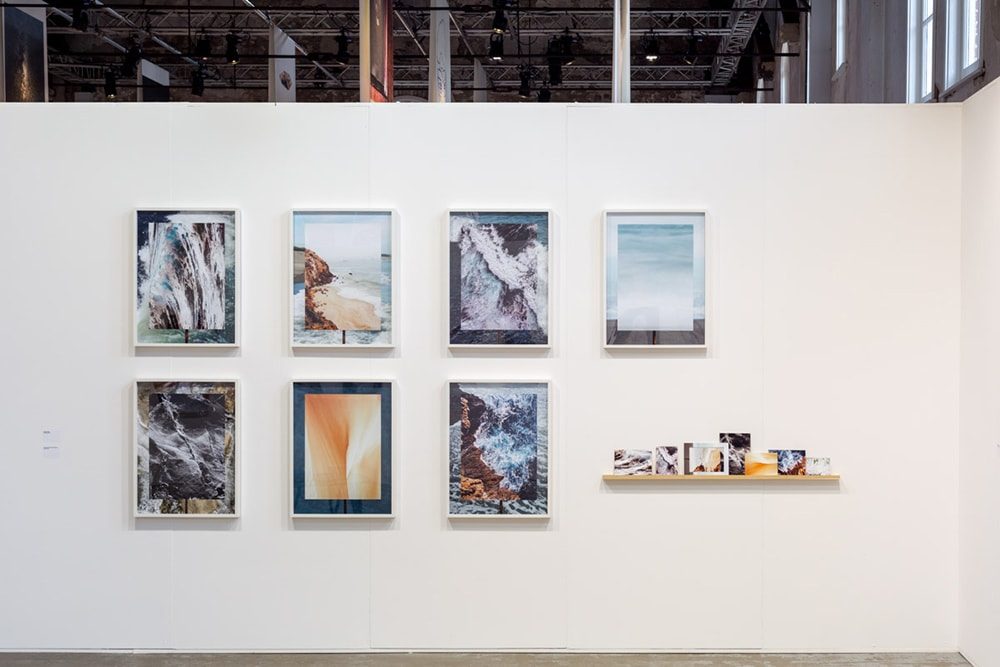
The exhibition for “LUMIX MEETS BEYOND 2020 BY JAPANESE PHOTOGRAPHER #6” in Amsterdam(photo by Shinji Otani)
Takeshi Mita
Born in Hiroshima in 1979. Finished M.F.A. Painting, Tama Art University Graduate Course in 2004. Mita has been exploring the theme of experience through his artwork and known for his original perspective and thought-provoking images that deal with pervasive information in today’s world. Major awards include the Grand Prix at TOKYO FRONTLINE PHOTO AWARD in 2014, the Excellence Award at Canon New Cosmos of Photography in 2015, JAPAN PHOTO AWARD in 2016, as well as the Gotoh Cultural Award in Fine Art Division in 2018. Recent solo exhibitions include Bundle of LIFE at Media shop gallery in Kyoto, 2017 and The Fictitious at Ying Gallery in China, 2017.
https://mita-takeshi.tumblr.com/





